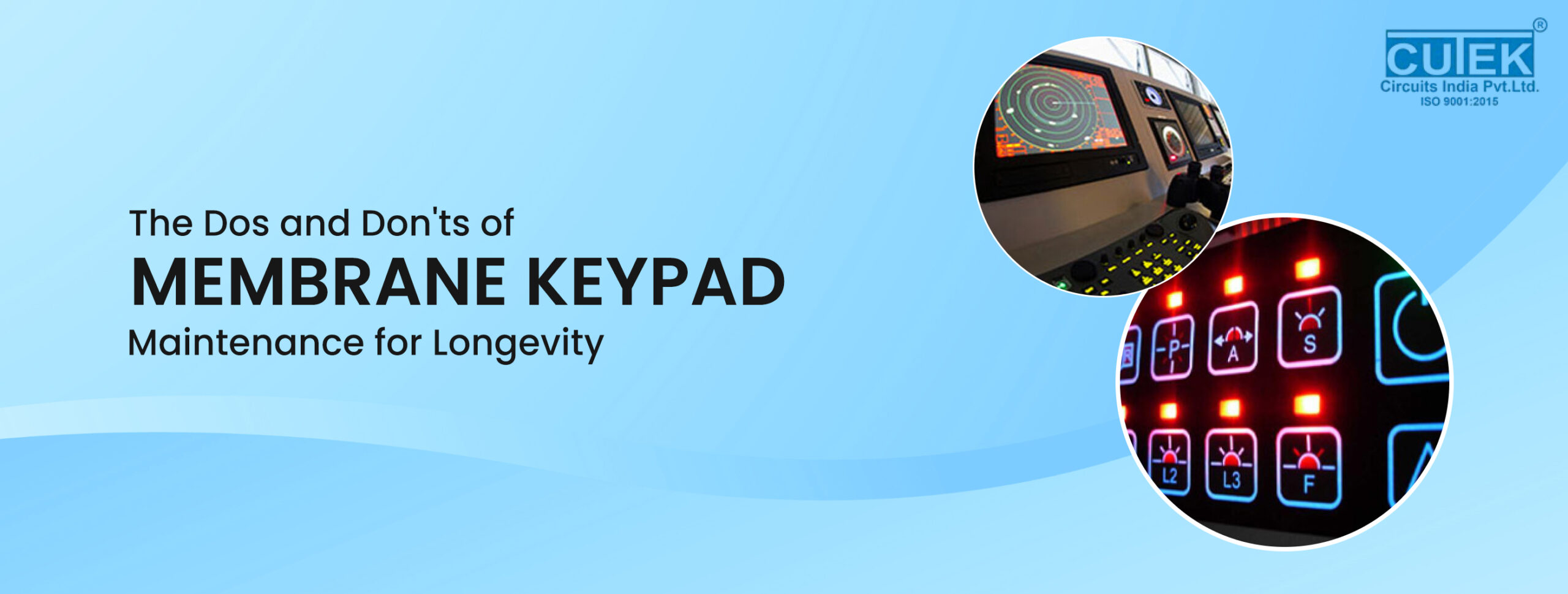The Dos and Don’ts of Membrane Keypad Maintenance for Longevity
Membrane keyboards are known for their versatility and durability. However, like every other keypad, they demand regular upkeep and adherence to maintenance instructions from membrane keypad manufacturer in india. If you have recently purchased a membrane keyboard for long-term use, this blog is for you. It discusses the various dos and don’ts you must follow to enhance your keyboard’s durability.
What is a Membrane Keyboard?
Obviously, you know what a membrane keyboard is because you have it. However, for those who are new to it and looking to buy one, a basic understanding can help. A membrane keyboard uses pressure pads and an underlying membrane to register key presses instead of individual mechanical switches for every key.
It comprises layers, including the top layer (key layer), middle layer (spacer layer), and bottom layer (circuit layer). The top layer has printed characters and symbols. On the other hand, the middle layer is a non-conductive layer separating the top and bottom layers. The bottom layer has conductive traces or circuits, completing an electrical connection when the user applies pressure while pressing a key.
Membrane keypads have straightforward working. So, when the user presses a key, the top layer gets pushed down through the middle layer, connecting with the bottom layer. This action completes the circuit and registers the keypress.
These keyboards are known for silent operations, low cost, and less tactile feedback. However, with these benefits come some responsibilities. Yes. We are precisely referring to maintaining the keyboard. Here are some dos and don’ts in this regard.
Dos of Membrane Keypad Maintenance
- Clean the keyboard’s surface with a soft and lint-free cloth and mild cleaning agents. Use gentle circular strokes to remove oil, dust, and dirt. Also, after wiping the keyboard, ensure the cleaning agents have evaporated or wiped off before you begin using the keypad again.
- Keypads wear with us or suffer damages like cracks, faded markings, or unresponsiveness in buttons. Staying mindful of these issues and detecting damages early can help prevent critical breakdowns.
- Membrane keyboards are used across industrial setups where they are exposed to harsh environments. Accordingly, you must consider using protective covers to protect the keypad from dirt, moisture, and extreme temperature or variations.
- Store the keyboard in a dry, dust-free, and controlled environment. Avoid exposing it to extreme temperatures, direct sunlight, or humidity as these factors can damage keyboard components and degrade its performance.
- Additionally, you must follow the manufacturer’s instructions concerning pressure, cleaning agents to be used, frequency of maintenance, etc., to keep the keypad in a healthy and optimal condition.
Don’ts of Membrane Keypad Maintenance
- Avoid harsh cleaning chemicals and abrasive materials, as they can damage the membrane’s surface, and affect its functionality.
- Excessive force can cause internal damage, resulting in key failures or unresponsiveness.
- Refrain from using sharp or pointed objects to press the keys as they can puncture and damage the membrane.
- Do not expose the keypad to extreme temperatures, humidity, or chemical spills as they can degrade the internal circuit or result in short circuits.
- Listen to the keyboard’s needs and repair issues at an early stage.
- Avoid submerging keypads in liquids as liquid contact can cause them to corrode, damage, or fail.
We hope the above helps you maintain your keypad and use it for a long time. Connect with Cutek Circuits if you are looking for a customized membrane keyboard. Our keyboard quality, use of premium components, and client trust make us a reliable membrane keypad manufacturer in India. Please email us at info@cutekcircuits.com to allow our experts to approach you and understand your needs.




